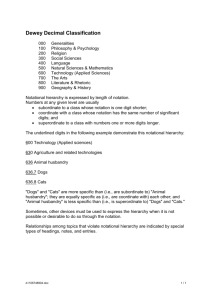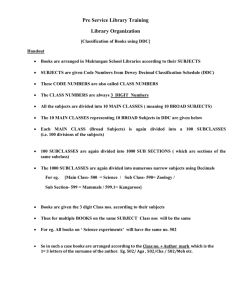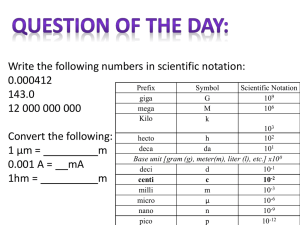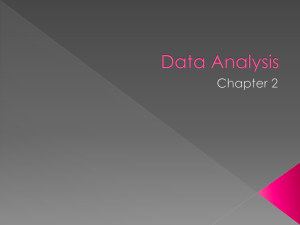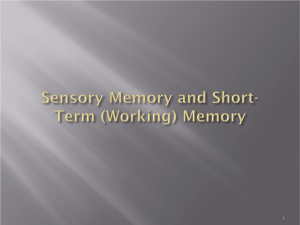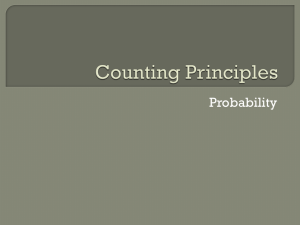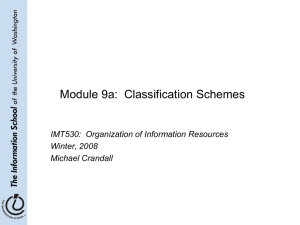DEWEY DECIMAL CLASSIFICATION
advertisement
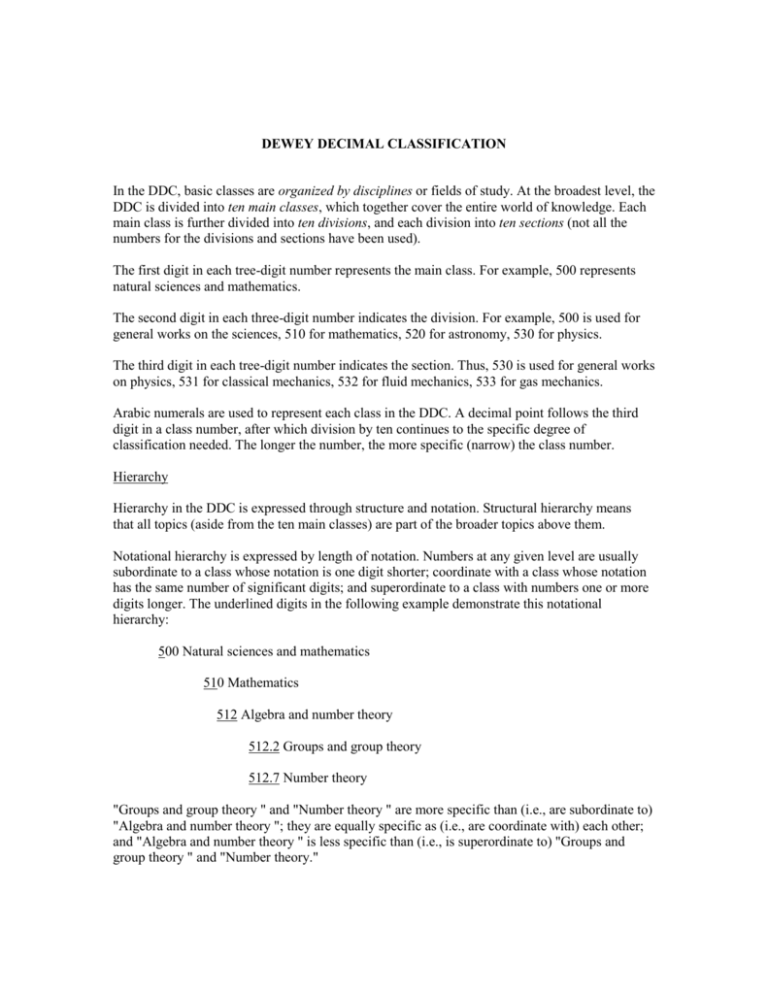
DEWEY DECIMAL CLASSIFICATION In the DDC, basic classes are organized by disciplines or fields of study. At the broadest level, the DDC is divided into ten main classes, which together cover the entire world of knowledge. Each main class is further divided into ten divisions, and each division into ten sections (not all the numbers for the divisions and sections have been used). The first digit in each tree-digit number represents the main class. For example, 500 represents natural sciences and mathematics. The second digit in each three-digit number indicates the division. For example, 500 is used for general works on the sciences, 510 for mathematics, 520 for astronomy, 530 for physics. The third digit in each tree-digit number indicates the section. Thus, 530 is used for general works on physics, 531 for classical mechanics, 532 for fluid mechanics, 533 for gas mechanics. Arabic numerals are used to represent each class in the DDC. A decimal point follows the third digit in a class number, after which division by ten continues to the specific degree of classification needed. The longer the number, the more specific (narrow) the class number. Hierarchy Hierarchy in the DDC is expressed through structure and notation. Structural hierarchy means that all topics (aside from the ten main classes) are part of the broader topics above them. Notational hierarchy is expressed by length of notation. Numbers at any given level are usually subordinate to a class whose notation is one digit shorter; coordinate with a class whose notation has the same number of significant digits; and superordinate to a class with numbers one or more digits longer. The underlined digits in the following example demonstrate this notational hierarchy: 500 Natural sciences and mathematics 510 Mathematics 512 Algebra and number theory 512.2 Groups and group theory 512.7 Number theory "Groups and group theory " and "Number theory " are more specific than (i.e., are subordinate to) "Algebra and number theory "; they are equally specific as (i.e., are coordinate with) each other; and "Algebra and number theory " is less specific than (i.e., is superordinate to) "Groups and group theory " and "Number theory."
